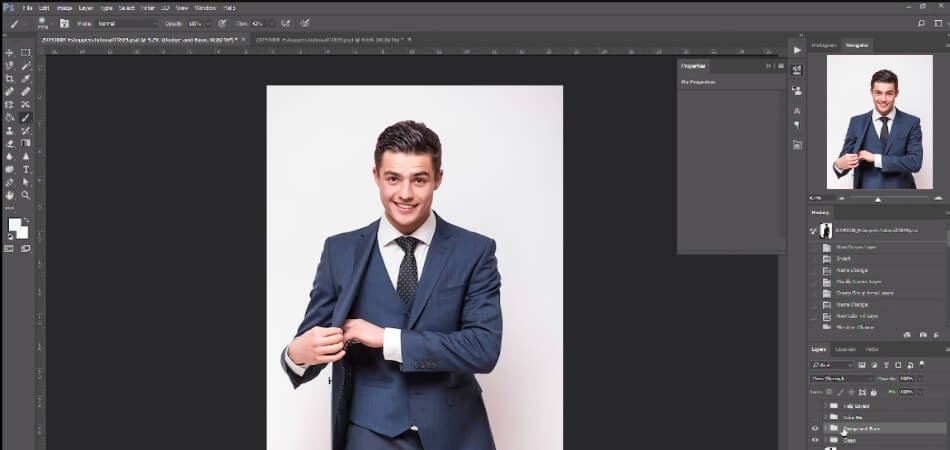Fashion photos are not just images; they are artworks that capture style and beauty in a frame. Have you ever wondered, “How do fashion photographers edit their photos?” to achieve magazine-cover perfection?
Behind every stunning fashion photograph is a blend of creativity and technical prowess, often polished with software like Adobe Photoshop, Lightroom, or Capture One.
These tools allow photographers to fine-tune lighting and exposure, crop for an ideal composition, and ensure every line is perfectly straight, ensuring each image meets fashion publication’s and campaigns’ high standards.
You’re interested, right? Stick around as we dive deeper into the magical editing process that transforms a good-looking photo into a fashion masterpiece.
Does Fashion Photographer Edit Their Photos?
Yes, many fashion photographers do edit their photos. The digital age has empowered them with tools and software to bring their creative visions to life directly. However, the extent of this involvement can vary based on several factors.
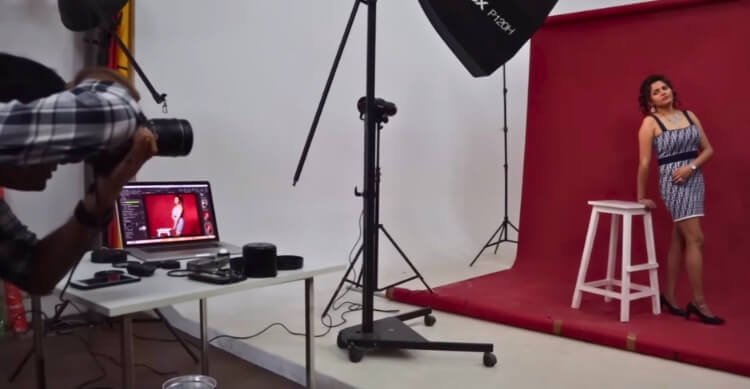
Time Constraints
Photographers often work on tight schedules. Editing can be time-consuming. Outsourcing to professionals can save valuable time. This is common during high-volume projects.
Skill Level
Not all photographers are skilled editors. Mastery in software like Photoshop requires dedication. Many prefer focusing solely on photography. They leave editing to experts for optimal results.
Creative Control
Some photographers seek complete creative control. They view editing as part of their artistic process. This ensures the final image aligns perfectly with their vision. It’s crucial for maintaining a unique style.
Project Budget
Budgets greatly influence editing decisions. Large projects might allocate funds for professional editors. Smaller projects may necessitate self-editing. This affects the quality and consistency of the images.
Whether fashion photographers edit their photos depends on time, skill, creative vision, and budget. The aim is always to achieve the best photo retouching for fashion photography. Each project’s unique requirements determine the editing approach.
The Best Software to Edit Photos
There are so many options available when it comes to photo editing software that it can be overwhelming. Each program offers unique tools and features for different editing needs and skill levels. Here are our top picks to help you find the perfect fit.
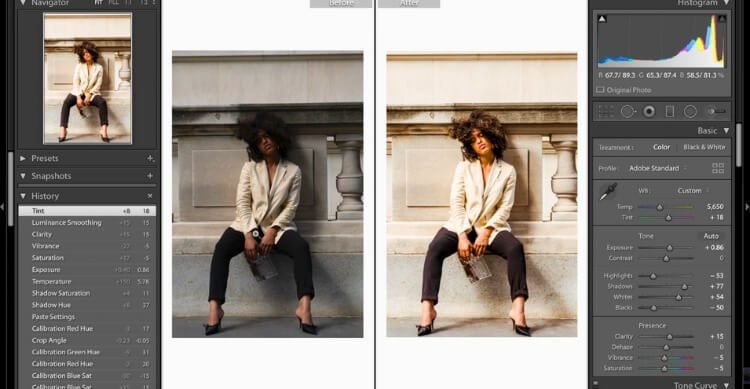
Adobe Photoshop
Photoshop stands as the titan of photo editing, beloved by professionals worldwide. Its vast array of advanced tools and features offers unparalleled depth for creative exploration. Photoshop’s capabilities are virtually limitless, whether retouching portraits or crafting complex compositions.
The software’s learning curve is steep but rewarding, opening doors to endless creative possibilities. Community support, extensive tutorials, and plugins further enhance its versatility. It’s ideal for those committed to mastering the art of photo editing.
Adobe Lightroom
Lightroom simplifies photo management and editing, making it a favorite among photographers. Its intuitive interface allows for quick adjustments, batch editing, and easy organization. Color correction, exposure adjustments, and preset applications shine here.
Unlike Photoshop, Lightroom focuses on workflow efficiency and non-destructive editing. This makes it perfect for photographers seeking a balance between power and simplicity. It’s especially useful for editing large volumes of photos with consistent quality.
Capture One
Capture One is praised for its color handling and detail preservation. It offers robust tools for image adjustment, tethered shooting, and asset management. Professionals love its customizability and advanced color editing features.
It caters to photographers who prioritize image quality and color fidelity. Though it has a learning curve, its dedicated user base and comprehensive tutorials provide ample support. Capture One is a strong contender for those looking to invest in their editing toolkit.
Choosing the right photo editing software, such as Lightroom or Photoshop, depends on your needs, skill level, and the specific aspects of photo editing you value most. Whether you seek comprehensive control, workflow efficiency, or color precision, there’s a tool tailored to your creative journey. Experiment with different options and discover which software best aligns with your artistic vision.
How Do Fashion Photographers Edit Their Photos?
Fashion photography isn’t just about capturing the moment; it’s about creating a vision that speaks volumes. The magic often happens post-shoot, where images are refined to tell a story or evoke an emotion. Here’s a straightforward guide to the editing steps often taken by fashion photographers to transform good photos into extraordinary ones.
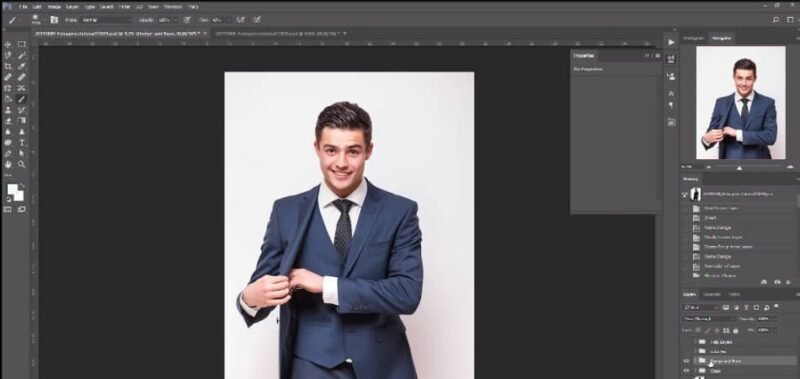
Step 1: Initial Culling
The first step is always about narrowing down the choices. Photographers sift through hundreds of images, selecting the ones that best capture the intended emotion and style. This ensures focus and effort are invested in the photos with the most potential.
Step 2: Basic Adjustments
Once the best images are chosen, basic adjustments are made. This includes tweaking exposure, contrast, and white balance to set the right mood. These foundational edits ensure the image has a balanced and appealing starting point.
Step 3: Retouching Skin
Fashion photography often requires flawless skin textures. Photographers meticulously remove blemishes and smooth out skin tones using tools like the Healing Brush in Photoshop. This step is crucial for achieving a polished look without losing the skin’s natural texture.
Step 4: Enhancing Colors
Color grading adds depth and emotion to the image. Photographers adjust saturation, vibrance, and hue to enhance clothing and background colors. This step is key to creating a visually cohesive and compelling image.
Step 5: Fine-Tuning Details
Attention to detail is what sets apart great photos. Sharpness, clarity, and noise reduction are carefully adjusted to make the image pop. Selective adjustments may also be applied to highlight key elements, like accessories or fabric textures.
Step 6: Adding Creative Effects
Photographers may apply creative effects like vignettes, grain, or selective blurring to direct the viewer’s focus or add a signature style. These finishing touches personalize the photo and elevate its artistic value.
Editing is an art form that allows fashion photographers to refine and enhance their work, preparing images that captivate and inspire. With patience and creativity, the editing process turns raw captures into stunning visuals in fashion magazines and campaigns. For that, you should hire the best fashion photo retouching service provider to ensure the highest quality and most captivating final images for your fashion brand or publication.
Factors to Consider While Editing a Fashion Photo
Editing a fashion photo is like painting on a canvas, where each stroke is a deliberate choice enhancing the overall masterpiece. The process involves more than just tweaking; it’s about bringing a creative vision to life.
Here are some key factors to consider during the editing process, ensuring every image not only captures attention but also tells a story.
- Lighting and Exposure: Proper adjustment ensures the subject is well-lit, and details are visible. Over or underexposure can distract from the focal points.
- Color Accuracy: Colors should reflect the true hues of the clothing and scene. This maintains brand integrity and the designer’s vision.
- Skin Retouching: It’s vital to enhance skin texture without making it look unnatural. The goal is to smooth imperfections while retaining natural skin details.
- Background Distractions: Remove or blur distractions that do not contribute to the story. This keeps the focus on the subject and the fashion.
- Composition and Cropping: Cropping can dramatically alter the photo’s impact. It should enhance the image’s story and direct the viewer’s eye.
- Contrast and Clarity: Adjusting these can add depth and make the image pop. Be careful not to overdo it, which can lead to an unnatural look.
- Style Consistency: Ensure the editing style aligns with the brand or publication’s aesthetic. Consistency is key to building a recognizable visual identity.
- Creative Effects: Adding effects like grain or vignettes should complement the image’s mood. They should enhance, not overpower, the photograph.
Tips to Find the Right Software for Editing Fashion Photos
Choosing the perfect software to edit fashion photos is akin to finding the right brush for a painter. It’s about matching your creative needs with the tool that feels just right in your hands. As you embark on this quest, consider these tips to help guide your choice, ensuring your visions come vividly to life through your work.
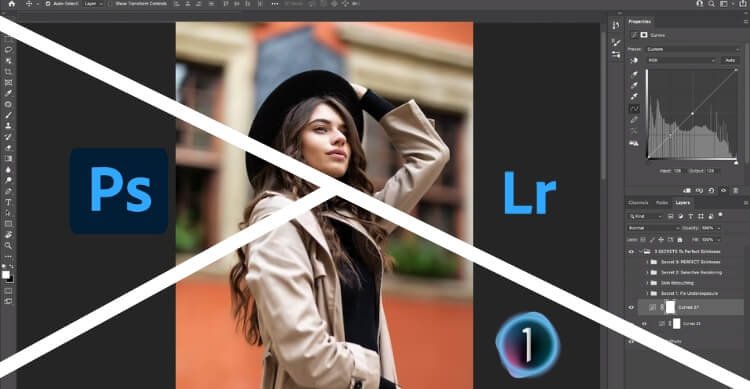
Consider Your Skill Level
Begin with software that matches your editing skills. Beginners should look for intuitive interfaces and basic tools. Advanced users can explore software with complex features and customization. Your growth as an editor won’t be hindered by overly complex tools.
Assess the Feature Set
Identify the features most critical to your work. For fashion photography, color correction and skin retouching tools are essential. Ensure the software supports high-resolution images for print quality. Not all software will have specialized tools for fashion editing.
Workflow Efficiency
Consider how the software fits into your workflow. Some programs offer batch processing, saving valuable time. Cloud storage and easy file sharing can streamline collaborations. Efficient workflow is crucial for meeting tight deadlines in fashion photography.
Compatibility and Integration
Ensure the software is compatible with your operating system and hardware. Integration with other tools and platforms can enhance your productivity. Some software offers mobile apps for editing on the go. Compatibility prevents unnecessary hurdles in your editing process.
Budget and Subscription
Factor in your budget and the software’s cost. Some high-quality options offer free versions with limited features. Subscription models can be cost-effective but check long-term costs. Your investment should align with the software’s value to your work.
FAQs about How Do Fashion Photographers Edit Their Photos?
Fashion photography editing is both an art and a science, blending technical skills with creative vision. Here are eight frequently asked questions that shed light on how fashion photographers refine their images, turning raw shots into captivating artworks.
What Software Do Fashion Photographers Commonly Use?
Fashion photographers primarily use Adobe Photoshop for detailed editing and Adobe Lightroom for color correction and batch processing. These programs offer a comprehensive set of tools for retouching, adjusting exposure, and fine-tuning colors to achieve the desired aesthetic.
How Important is Skin Retouching in Fashion Photography?
Skin retouching is crucial in fashion photography to ensure models look their best. Photographers use techniques like frequency separation in Photoshop to smooth skin while retaining texture, giving a natural and polished look without appearing overly airbrushed.
Do Photographers Edit Every Photo From a Shoot?
Not every photo is edited; photographers first cull their shots to select the best ones. The chosen images then go through an editing process, which can range from basic adjustments to comprehensive retouching, depending on the project’s needs.
How Do Photographers Achieve a Consistent Look Across Photos?
Photographers use presets in Lightroom or create custom action sets in Photoshop to apply the same adjustments across multiple photos. This ensures consistency in lighting, color grading, and overall mood, which is essential for cohesive storytelling in fashion editorials.
What is the Role of Color Grading in Fashion Photography?
Color grading plays a significant role in setting the mood and style of fashion images. It involves adjusting the colors to create a specific atmosphere, complement the clothing, and enhance the overall visual narrative of the shoot.
How Do Photographers Handle Backdrop and Environment Edits?
Photographers often adjust the backdrop and environment to eliminate distractions, enhance the scene, or add creative elements. Tools like the clone stamp or content-aware fill-in Photoshop are used to clean up or modify backgrounds.
Is It Common to Use External Editors or Retouchers?
Yes, many fashion photographers collaborate with professional retouchers or external editing services to achieve high-quality results. This partnership allows photographers to focus on shooting while retouchers enhance the images, especially for high-end fashion editorials.
How Has Editing Software Evolved to Cater to Fashion Photography?
Editing software has evolved significantly, with updates and new features designed to meet the specific needs of fashion photography. AI-powered tools for skin retouching, automatic background removal, and advanced color grading options have streamlined the editing process, enabling more creative freedom and efficiency.
Endnotes
A simple photograph can be transformed into an iconic image through a meticulous process that combines artistry and technical expertise. Precision and creative foresight are applied throughout the process.
The question of how do fashion photographers edit their photos, reveals a complex answer involving a deep understanding of software capabilities, a keen eye for detail, and an unwavering commitment to artistic vision.
With the right tools in hand, photographers navigate the challenges of lighting, color accuracy, and composition, ensuring their images capture and enchant. This editing journey is a testament to the relentless pursuit of perfection. It showcases the unseen effort behind every breathtaking shot that graces fashion publications.
